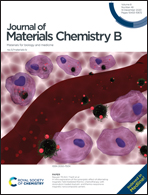Highly sensitive detection of rutin in pharmaceuticals and human serum using ITO electrodes modified with vertically-ordered mesoporous silica–graphene nanocomposite films†
Abstract
Herein we report a simple and rapid approach to fabricate a vertically-ordered mesoporous silica–electrochemically reduced graphene oxide nanocomposite film (VMSF/ErGO) on an indium tin oxide (ITO) electrode surface by the electrochemically-assisted self-assembly (EASA) method, which is capable of greatly promoting the electroanalytical performance of rutin compared to the previously reported VMSF modified ITO electrode and, meanwhile, displaying excellent anti-fouling and anti-interference ability in pharmaceutical formulations and human serum. Due to the excellent electrocatalytic activity of ErGO and the synergistic enrichment effects from the π–π interaction of ErGO and the hydrogen bond effect from the VMSF, the present VMSF/ErGO/ITO sensor is able to detect rutin with a wide linear range, a high sensitivity and a low limit of detection. Moreover, the VMSF/ErGO/ITO electrode could retain the high sensing performance with high transmittance upon tailoring the concentration of the modified graphene oxide (GO), which provides a simple approach for modifying transparent ITO electrodes and could be potentially used for optoelectronic devices.



 Please wait while we load your content...
Please wait while we load your content...